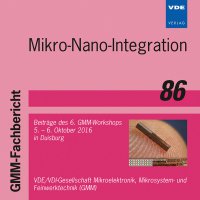Technologies for modular microsystems for the Internet of Things (IoT)
Konferenz: Mikro-Nano-Integration - 6. GMM-Workshop
05.10.2016 - 06.10.2016 in Duisburg, Deutschland
Tagungsband: Mikro-Nano-Integration
Seiten: 6Sprache: EnglischTyp: PDF
Persönliche VDE-Mitglieder erhalten auf diesen Artikel 10% Rabatt
Autoren:
Hampicke, M.; Ostmann, A.; Wolf, J. M. (Fraunhofer Institute for Reliability and Microintegration (IZM), Berlin, Germany)
Manessis, D.; Lang, K.-D. (Microperipheric Research Center, Technical University of Berlin (TUB), Berlin, Germany)
Inhalt:
Through the connection of almost any object, IoT permeates every aspect of life of the communication, mobility, energy supply, trade, logistics up to industrial production. Important though is, that with this networking of „things“ very different measurement tasks have to be realized and consequently very different requirements are being imposed on the sensor systems. This complicates the development, since the sensor systems must always be readapted to the requirements, to take different sampling rates, different intelligence of the sensor system, various interfaces, installation space or environmental and reliability requirements into account, but nevertheless also must be inexpensive. In addition, besides the classical sensors such as temperature, humidity, acceleration, pressure etc, but also images, language/sounds, as well as spectra, gas concentrations, heat radiation and more are being found in the future Internet of Things. So that these low-cost systems can be provided, this requires an modular approach (modular system) that fulfills the myriad of requirements with low development effort on the one hand, while on the other hand proven system integration technologies for a reliable and in many cases demanded miniaturized version of modular systems is needed [La12], [Ost11]. The paper reports on modular approaches using system integration technologies based on wafer and panel level integration. In the field of wafer level, the 3D-integration through interposer technology and generic integration platform is being reported, which allows greater flexibility in the application-specific modules based on wafers through modularization of basic structures and technological base elements in the fields of design, technology and testing/ analytics. In the field of panel level, the report mentions especially the PCB Embedding (Panels 18x24) to prefabricate functional modules (e.g. camera module) in medium to high volumes and combine them varied according to 3D-stacking with other modules individually. Not only passive components, active components (memory, processor, controller etc.) too can be embedded in a module and be combined into a system. Finally, a number of examples are shown that illustrate the respective modular approach.


